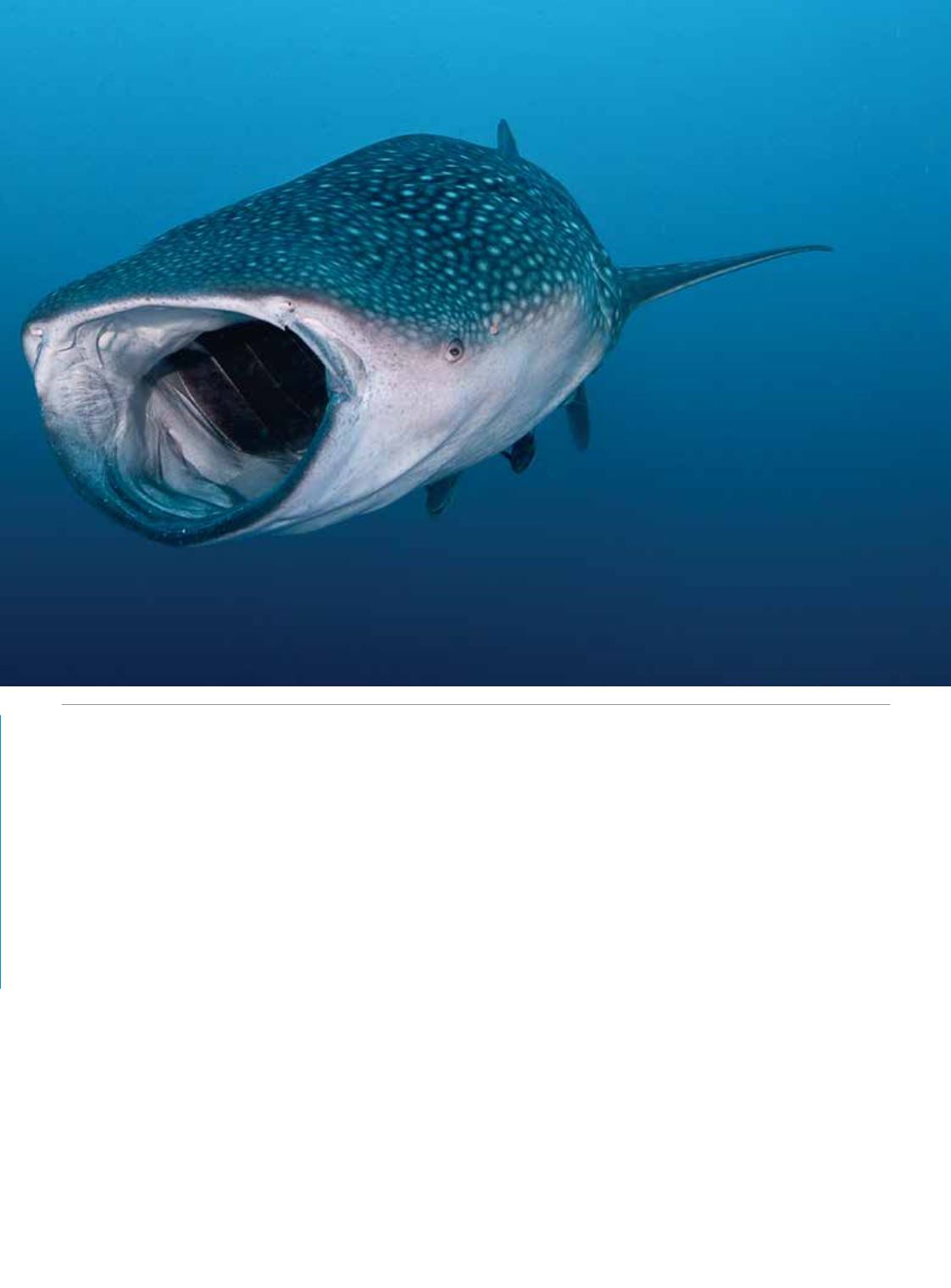
 ALERTDIVER.COM
ALERTDIVER.COM
|
81
only a couple of juveniles would still be hanging around
for more handouts. At about 4 p.m. the crepuscular rays
radiating through the water acted as a dinner bell. The
sharks disregarded all table manners, frantically rushing in
with mouths agape, climbing atop one another with great
urgency, taking in as much food as possible before nightfall.
Throughout the four days we spent with these sharks,
all members of our expedition were able to approach them
closely and make eye contact on both snorkel and scuba.
They were gentle and appeared to move their powerful tails
so as to avoid hurting divers. Seemingly unopposed to our
presence, some actually rose vertically alongside us to pose
with the clumsy bubble-blowers.
At one point I was photographing three sharks as
they confronted fishermen on the bagan for more food.
Unbeknownst to me, two bigger sharks approached the
bagan from behind me. I felt a push, and in the next
moment I was like ham between bread, sandwiched
between five animals, each of which weighed around 15
tons. It was a sloppy moment, with colossal fleshy mouths
all around me, but the sharks were gentle, and I managed to
escape from among them. I was flabbergasted, and my grin
was as wide as a whale shark’s mouth.
We know that whale sharks rise to the surface to feed on
plankton and small fish, but there is much we don’t know
about them. The biggest fish in the ocean, they breathe with
gills and are ectothermic (cold-blooded), preferring to swim in
warm waters. We are unsure if the Cenderawasih population
is local, but if the shark-fin merchants were to move in, all
the animals in the bay could be harvested in just a couple of
weeks. To better understand the migratory patterns of these
sharks, Erdmann led Conservation International expeditions
to tag some of them. (Learn more at
Conservation.org .) The
tags revealed that the sharks are not permanent residents of
the bay, but some return each year.
The tagging exercise is an important effort to learn more
about these awesome animals: where and how they mate,
how they spend their early years and other mysteries. The
tags may or may not provide some answers, but the primary
concern is learning how to better protect them and their
habitat for future generations.
We termed Cenderawasih Bay a global treasure. Ocean
conservationist and diving legend Valerie Taylor has an
even better description: the eighth natural wonder of our
world. Cenderawasih is an embodiment of nature’s beauty
that fans our fervor to protect and preserve.
AD
















